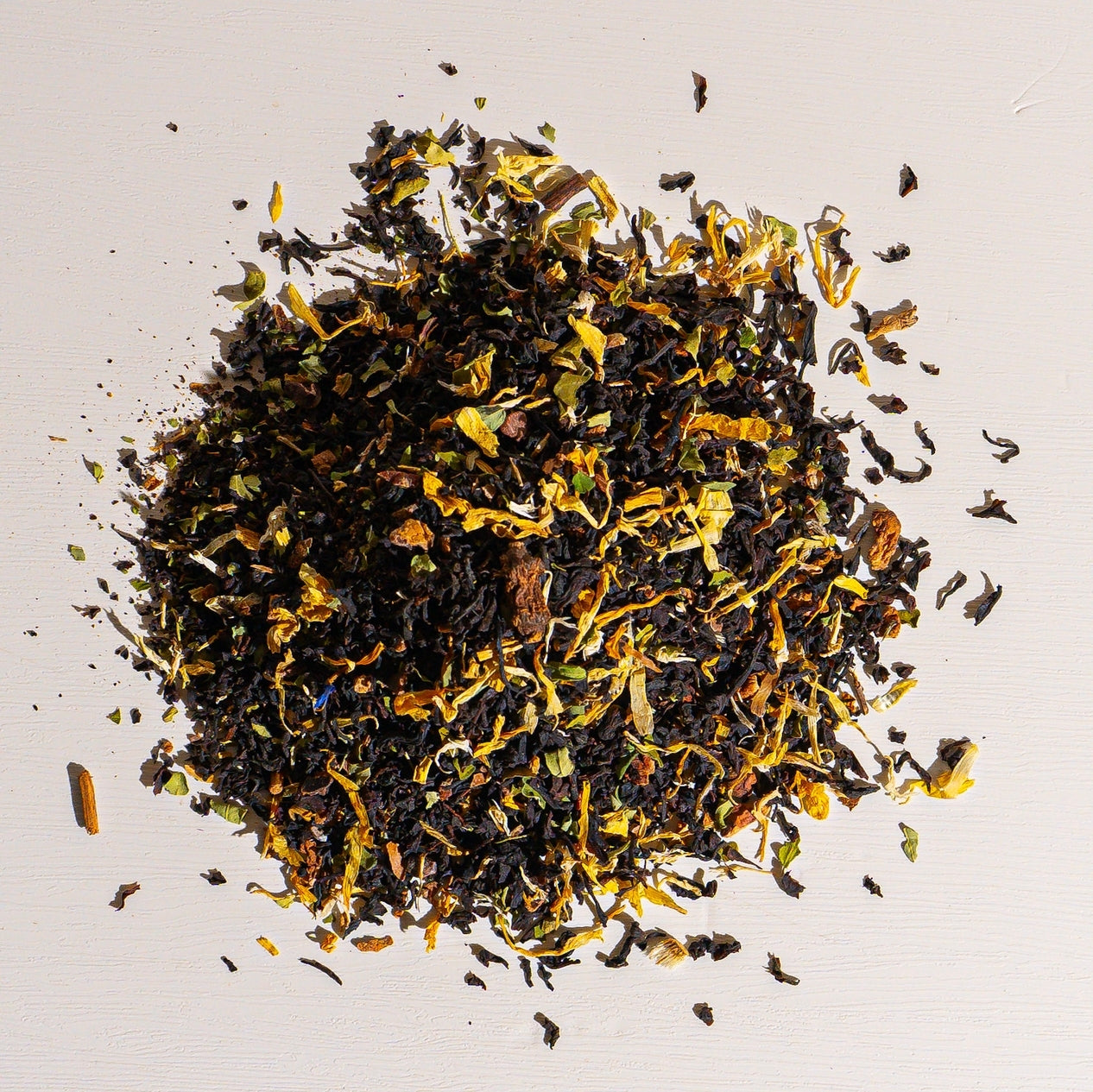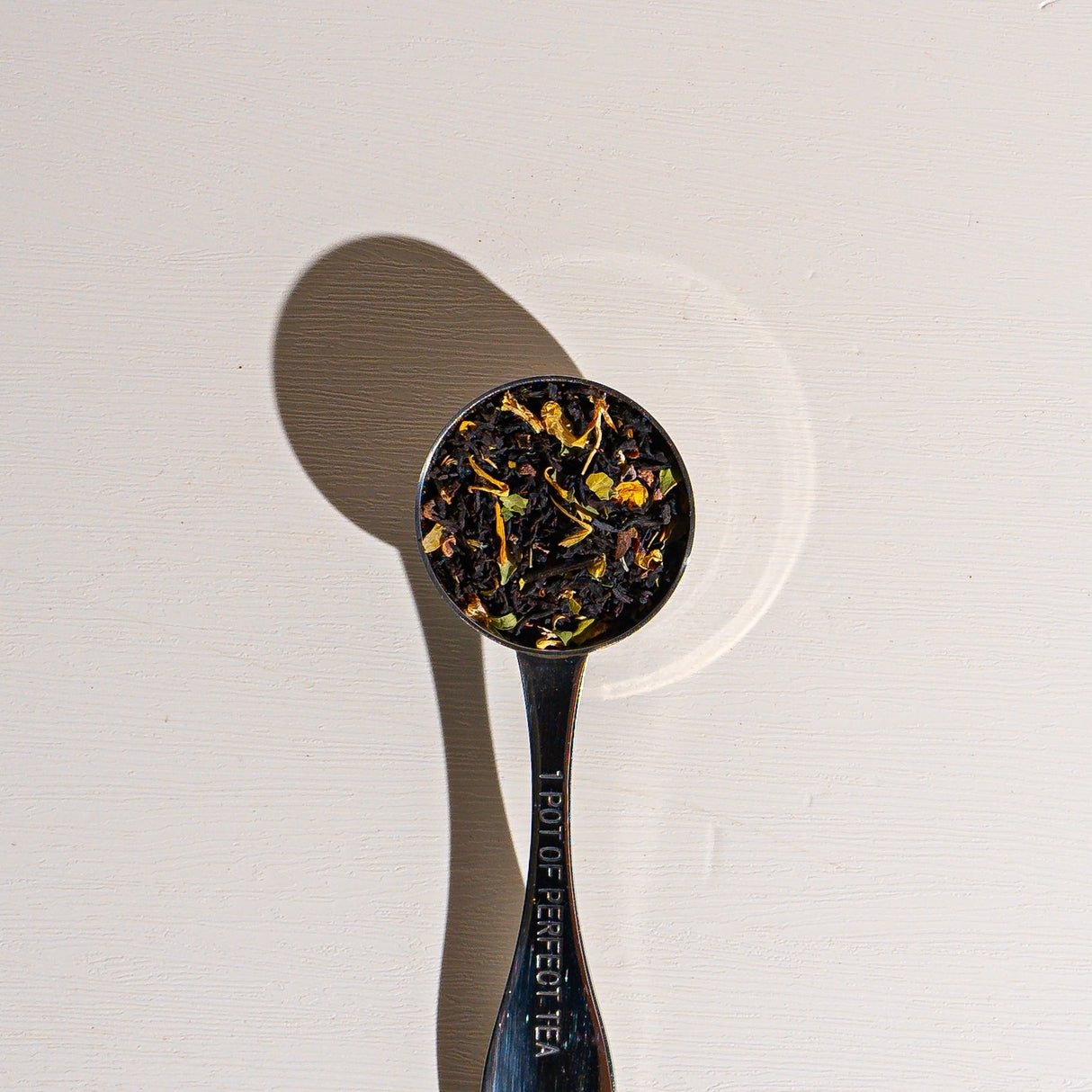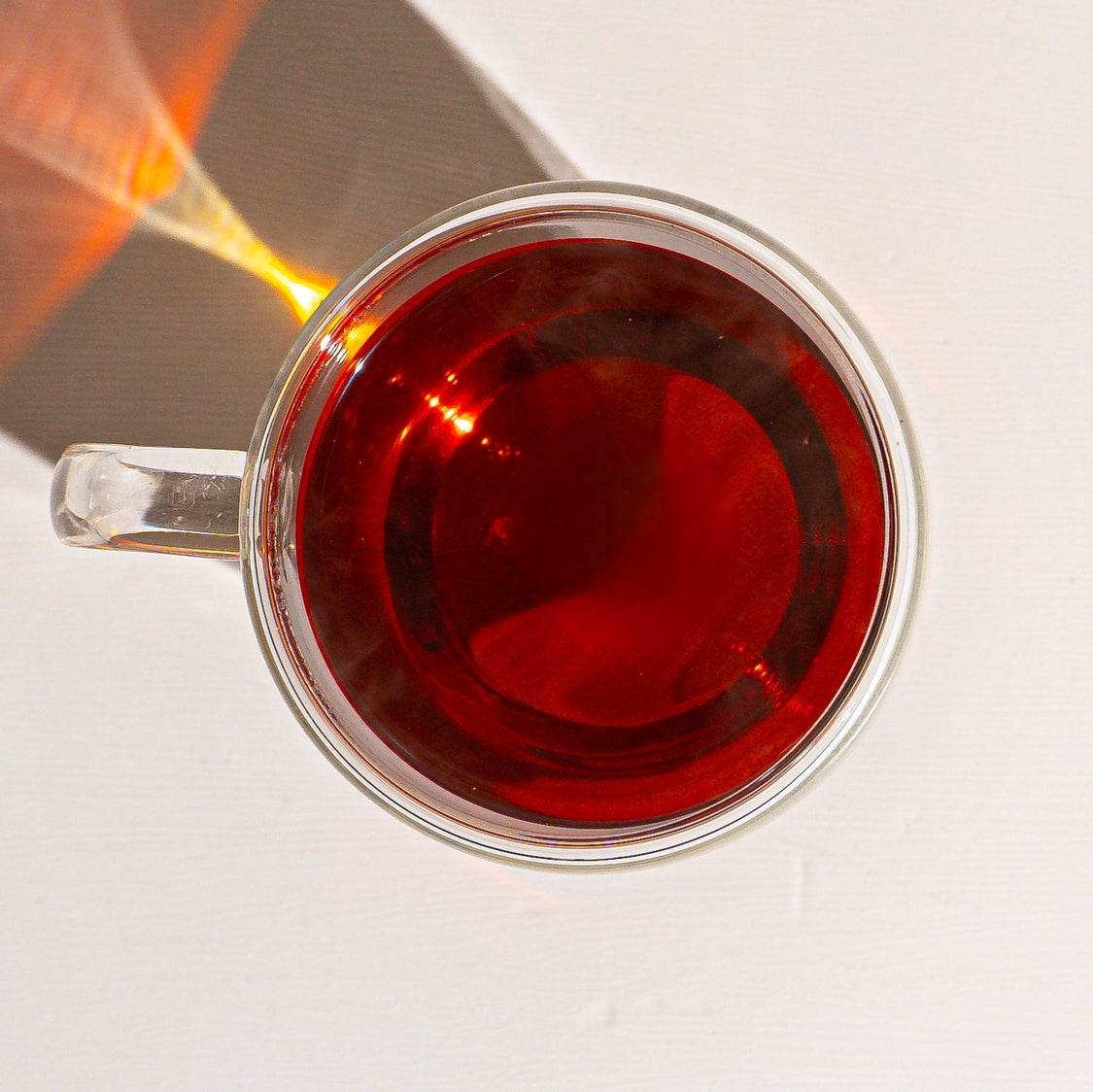White Chocolate Mousse
This enchanting infusion combines robust black tea with velvety carob pieces and rich cocoa beans, creating a delightful base. Sarsaparilla root adds a hint of sweetness, while moringa infuses a touch of earthiness.
Taste Notes: Decadant, sweet, creamy
Luxury Ingredients: Black tea, Sarsaparilla root, Moringa, Cocoa beans, Calendula, Sunflower, Cornflower petals, Natural flavors(organic compliant)
Origin: Sri Lanka / Kenya / India / Egypt / Poland
Made with all natural, organic-certified flavorings.
This tea supports the Ethical Tea Partnership
All Camellia sinensis in our blends contributes to a fairer, more sustainable tea industry.
CAFFEINE CONTENT | HIGH
Cup per oz
10-12 cups per 1 oz
Couldn't load pickup availability
 1-2
1-2



 4-6 mins
4-6 mins
 1-2
1-2

 205-212°F
In 475 ml (8oz)
205-212°F
In 475 ml (8oz)

 4-6 mins
4-6 mins
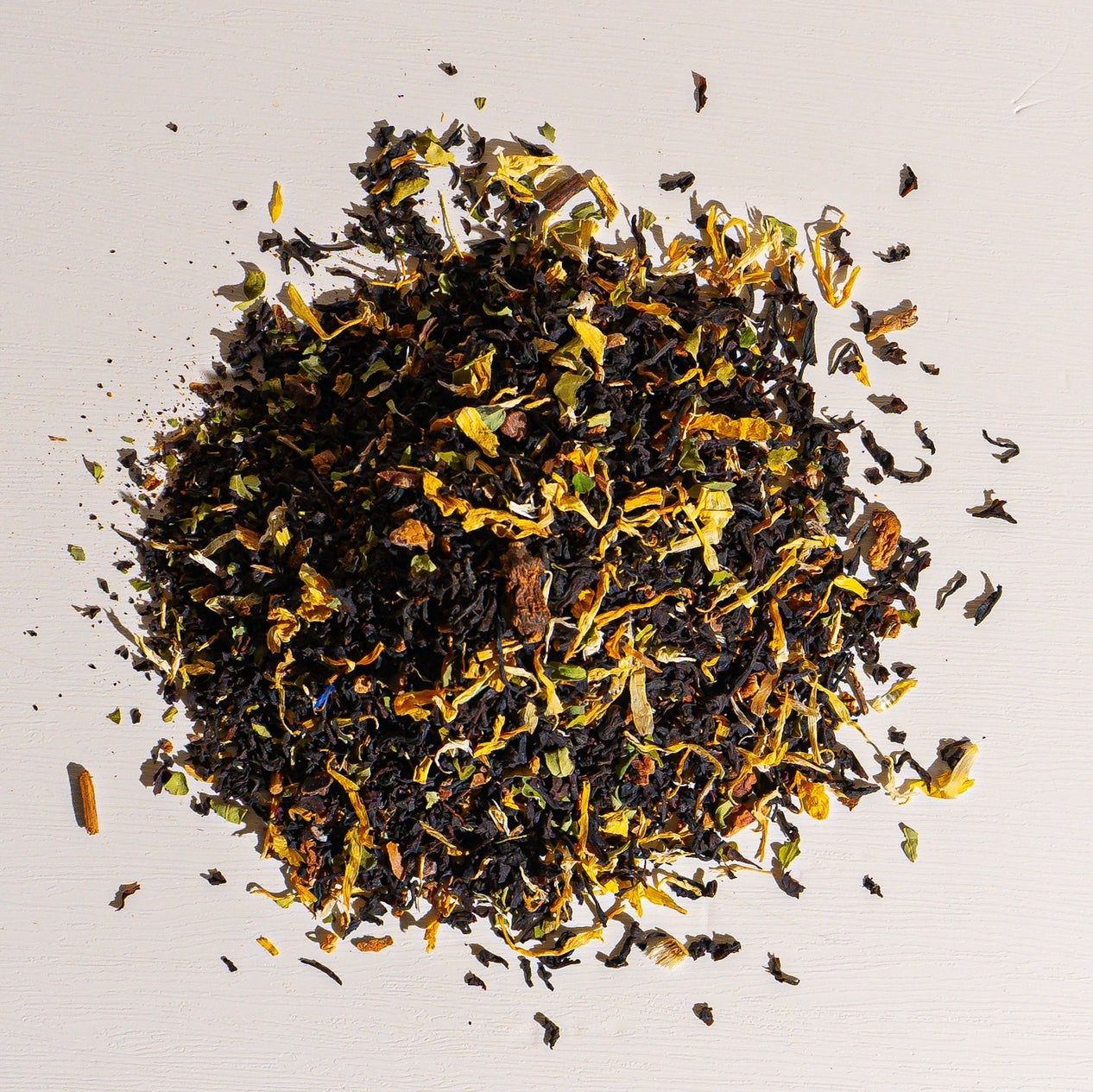

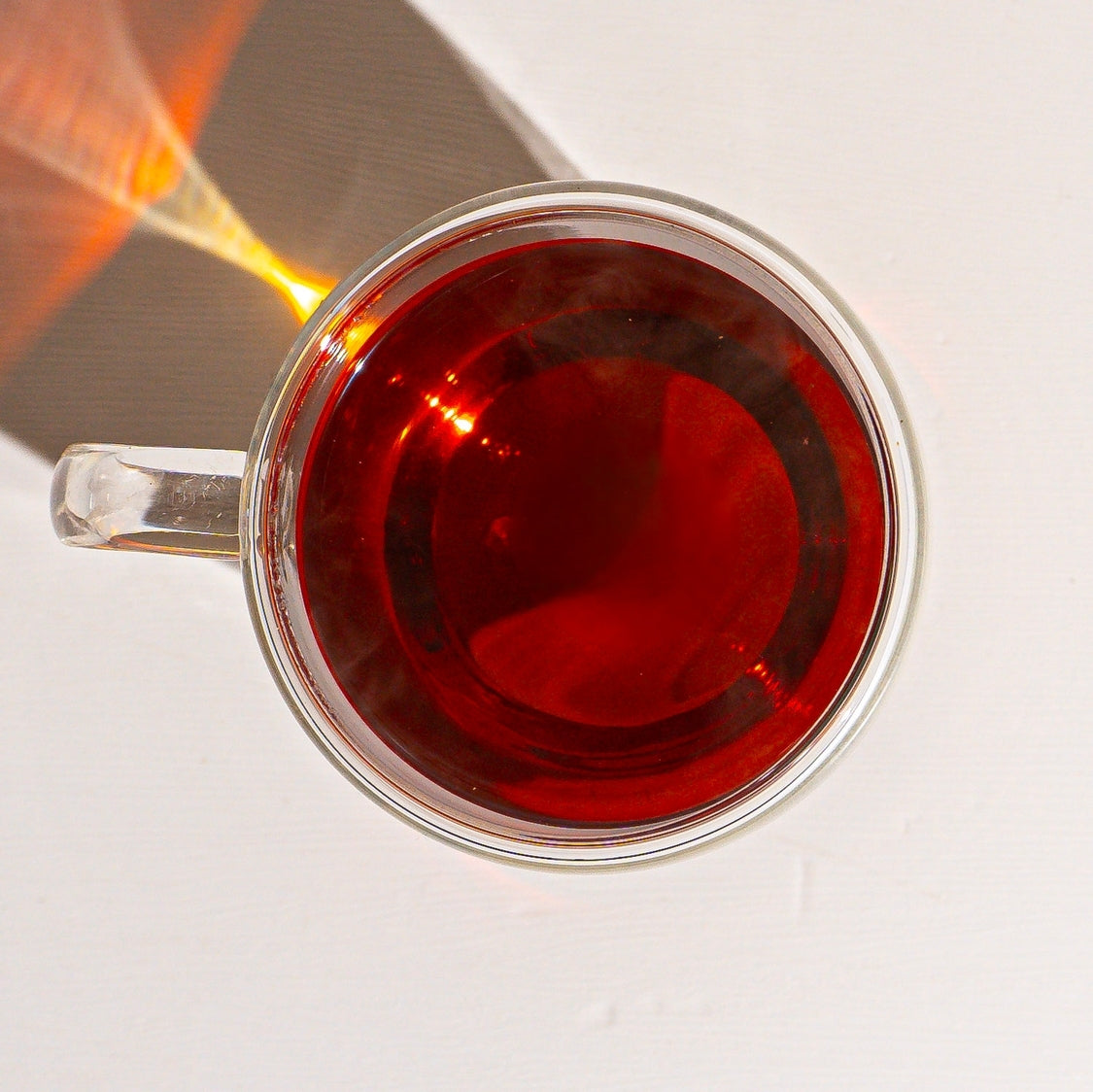

This is one of my favorites so far!
I literally just got this in the mail and couldn't wait to try it, so I brewed some right away! The aroma was heavenly. The tea was great!! I definately had a very nice white chocolate finish to it. I would absolutely order this again!
This tea is WONDERFUL! I knew I'd like it, but it's much more interesting than I thought it would be. Culinary Teas is very good at well balanced blends. I just love teas that do more than one thing to your tastebuds, and the white chocolate mousse tea does just that. Take a sip and roll it around your tongue for a moment. I could actually taste a VERY nice distinct roasty cacao bean. The finish was then delicately creamy white chocolate. Mmmmm!! Think I'll go have a second pot!


